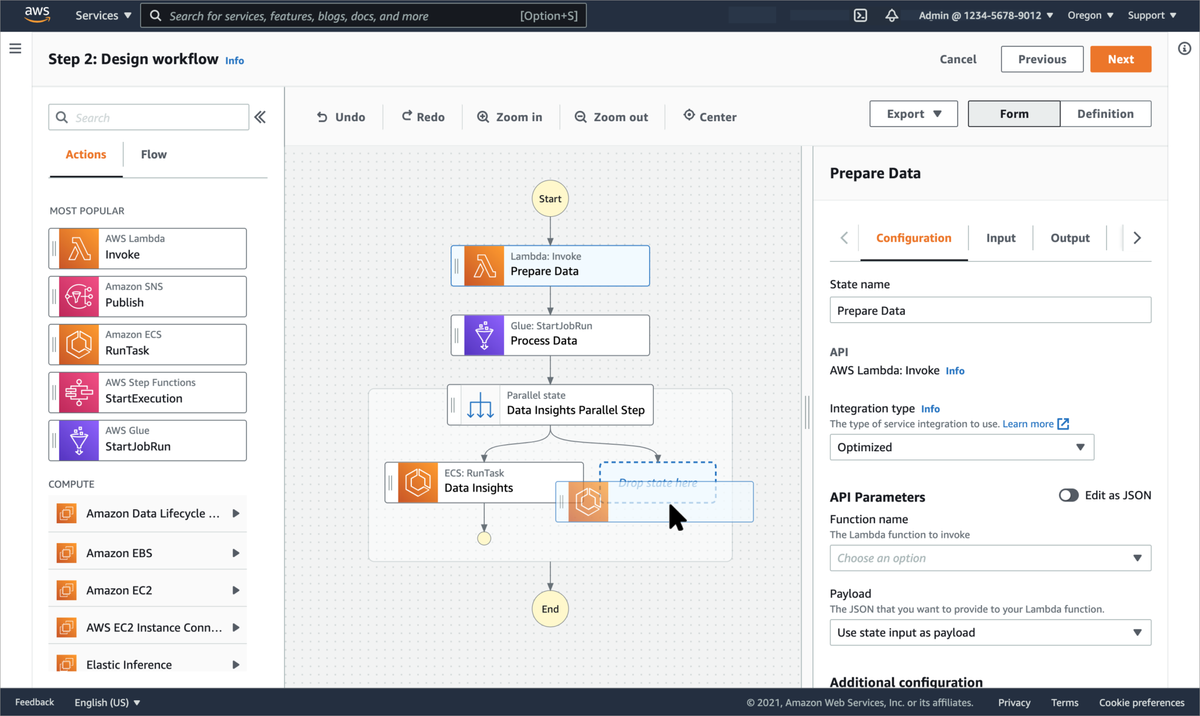Understanding Step Functions: A Detailed Guide

Introduction
Step Functions, introduced by Amazon Web Services (AWS), represent a powerful and versatile service for orchestrating complex workflows. By allowing developers to build distributed applications using visual workflows, Step Functions make it easier to coordinate multiple AWS services. This article delves into the intricacies of Step Functions, explores their performance benchmarks, and presents a real-world production use case.
What Are Step Functions?

Step Functions are a part of AWS's serverless ecosystem, providing a way to coordinate components of distributed applications and microservices using visual workflows. They enable the creation of state machines, where each state represents a different task. These tasks can be anything from invoking a Lambda function to making API calls to other AWS services.
Key Components
- State Machines: These are the core of Step Functions, defining the series of steps needed to complete a task.
- States: Each state within the state machine can be a task, choice, fail, succeed, or pass state.
- Tasks: Tasks represent the individual units of work performed by Step Functions.
- Transitions: Transitions define the flow from one state to another based on the outcome of the previous state.
Performance Benchmarks
Performance is a critical consideration for any service used in production. AWS Step Functions are designed to be highly reliable and scalable, with the following key performance characteristics:
- Latency: Step Functions exhibit low latency, typically in the range of milliseconds, for state transitions. This makes them suitable for high-frequency and real-time applications.
- Scalability: Step Functions can scale automatically to handle thousands of workflows per second. They seamlessly manage the infrastructure, ensuring consistent performance regardless of the load.
- Durability: The service ensures that workflows are durable and fault-tolerant, with built-in retries and error handling mechanisms.
Benchmark Results
A benchmark study conducted by AWS shows that Step Functions can handle up to 100,000 state transitions per second with a latency of approximately 100 milliseconds per state transition. This level of performance makes Step Functions suitable for a wide range of applications, from simple automation tasks to complex, long-running workflows.
Production Use Case: E-commerce Order Processing
Let's consider a real-world use case of an e-commerce platform that leverages AWS Step Functions for order processing. The workflow involves multiple steps, including payment processing, inventory management, and shipping.
Workflow Description
- Order Validation: The first state validates the incoming order, ensuring all required information is present.
- Payment Processing: The workflow then transitions to a state that processes the payment using an external payment gateway.
- Inventory Check: Upon successful payment, the inventory is checked to ensure the ordered items are available.
- Shipping Preparation: If the inventory check passes, the order is prepared for shipping. This state might involve generating shipping labels and notifying the warehouse.
- Notification: The final state sends a notification to the customer, confirming that the order has been processed and is on its way.
Implementation Details
- Lambda Functions: Each state in the workflow invokes an AWS Lambda function to perform the required task. For example, a Lambda function for payment processing communicates with the payment gateway, while another Lambda function checks the inventory in a DynamoDB table.
- Error Handling: Step Functions provide built-in error handling. For instance, if the payment processing fails, the workflow can automatically retry the operation or transition to a state that handles the error, such as sending a failure notification to the customer.
- State Machine Definition: The state machine is defined using Amazon States Language (ASL), a JSON-based language for describing state machines.
Advantages
- Simplicity: The visual workflow makes it easy to understand and manage the order processing logic.
- Scalability: Step Functions can handle peak loads during high traffic periods, such as Black Friday sales.
- Reliability: Built-in retry and error handling mechanisms ensure that the workflow is robust and fault-tolerant.
Conclusion
AWS Step Functions provide a powerful and flexible way to build and manage complex workflows. With their low latency, high scalability, and robust error handling, Step Functions are well-suited for a variety of applications, from simple automation to complex distributed systems.
The e-commerce order processing use case demonstrates how Step Functions can be effectively used in a production environment, providing reliability and scalability that are critical for business success.
References
- AWS Step Functions Documentation: AWS Step Functions
- Benchmarking AWS Step Functions: AWS Blog
- State Machines with AWS Step Functions: AWS Architecture Blog
By leveraging AWS Step Functions, organizations can simplify the orchestration of complex workflows, improve application reliability, and scale efficiently to meet business demands.
